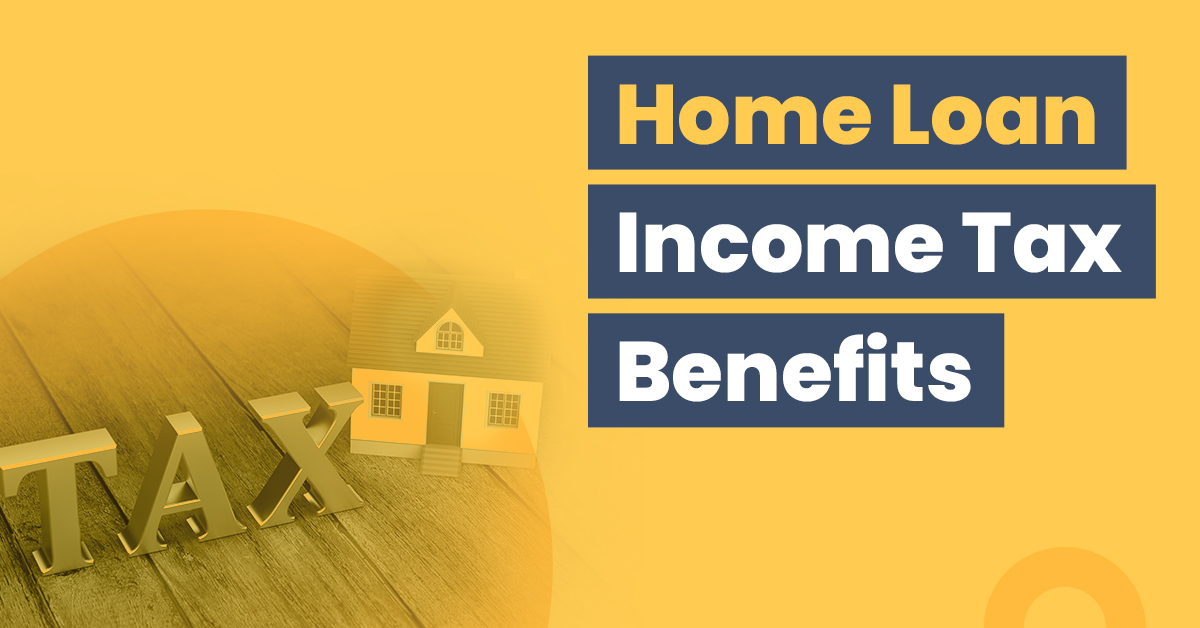Everything You Need To Know About Tax Benefits On Home Loans


What if we told you that there was a way to get a home loan, buy a property, and save cash all at the same time?
To support the Indian housing sector and encourage taxpayers to purchase new homes, the Income Tax Department of India has offered some incentives for obtaining new home loans. Tax benefits are available as an income tax deduction for the principal and interest on mortgage loans, transfer fees, and other costs associated with buying real estate.
The Government of India has also put in place regulations that enable people to reduce their tax obligations related to home loan payments significantly. Therefore, you should get familiar with the articles and sections of the Income Tax Act, 1961 that enable you to receive tax exemptions after taking a home loan.
Deduction For Interest Paid (Section 24)
Section 24 of the Income Tax Act allows the deduction of interest payments from the total tax liability. For a self-occupied property, the maximum eligibility for this deduction is ₹2 lakh, which you can claim if the property is acquired or the construction is completed within five years from the end of the financial year in which you took the loan. If this condition is not met, the maximum eligible deduction is reduced to ₹30,000. However, this deduction has no upper limit if you procured the loan for a property to be leased out.
Section 80EE
As per section 80EE, if you meet the below-mentioned conditions, you can claim an additional deduction of up to ₹50,000 against the interest payable on loans acquired to buy a home property:
- A financial institution or a housing finance company approved the loan in the fiscal year 2016–17.
- The loan amount sanctioned is less than ₹35 lakh.
- The value of your property is at most ₹50 lakh.
- You did not own any other home on the day when the loan was sanctioned.
Subject to meeting the above-mentioned requirements, the interest deduction allowed by Section 80EE is available until the loan has been repaid.
Also Read: All You Need to Know About Home Loan Tax Benefits
Section 80EEA
Section 80EEA was added in FY 2019–20 to expand and improve the advantages provided under Section 80EE for affordable housing. As per this section, if you meet the below conditions, you are allowed a further deduction of up to ₹1.5 lakh for interest paid on home loans:
- A financial institution or a housing finance company approved the loan between April 1, 2019 and March 31, 2022.
- The value of the residential property is at most ₹45 lakh.
- You are not eligible under Section 80EE.
- You were the property’s original owner when the loan was approved, and this was your first home purchase.
Section 24 vs Section 80EE/80EEA
The deductions for interest payments under Section 80EE and Section 80EEA are in addition to the permissible deduction of ₹2 lakh under Section 24. Therefore, you should utilise the Section 24 deductible limit of ₹.2 lakh first in order to receive the full benefit of these deductions.
The next step is to claim the additional benefits listed in Sections 80EE and 80EEA. If you qualify under section 80EEA, you can claim deductions up to ₹3.5 lakh for interest on a home loan. This amount would be ₹2.5 lakh if you satisfy the requirements under Section 80EE.
Payments Made Towards The Principal Component
In addition to the deduction for the home loan’s interest component, you can also claim a deduction for the principal part of the loan. The highest deduction is ₹1.5 lakh under Section 80C of the Income Tax Act. However, this claim is valid only for the year in which you made the payment.
Nevertheless, there is a condition under which this repayment of the principal amount of the housing loan is allowed. The deduction is only possible after the house is completed and there is a completion certificate affirming the same. The principal amount paid on any under-construction structure/property will not be a deduction under this section.
Read More: PPF vs LIC: A Detailed Comparison
Interest On Pre-Construction
The pre-construction phase starts from the day your home loan is approved and lasts until the construction is completed. While the property is under construction, the interest deduction is not permitted. However, the pre-construction interest is allowed as a deduction over five equal payments beginning with the year the property’s construction is completed.
For a self-occupied property, the maximum eligibility for this deduction is ₹2 lakh. You can even claim this pre-construction interest deduction for a let-out property subject to certain restrictions.
Deduction For A Joint Loan
Nowadays, many families have more than one source of income, meaning both partners work full-time or make investments. Such a couple can each claim a deduction for home loan interest up to ₹2 lakh and principal repayment up to ₹1.5 lakh if a housing loan is obtained jointly. This has two advantages.
First, they can buy a more expensive and spacious home, and second, they can receive more significant tax benefits. To qualify for this deduction, you must be a co-owner of the property used as collateral for the mortgage.
Deduction For Stamp Duty And Registration Charges
You can also claim a deduction for stamp duty and registration fees up to ₹1.5 lakh under Section 80C. This tax exemption, however, is only valid for the year in which the expenses are incurred.
Documents Required To Claim Tax Benefits On Home Loans
Given below is a list of the documents that you will have to provide to avail the tax benefits:
- Details of the property’s owners are to be given.
- Loan certification is very clear about how the principle and interest components of EMIs are divided. Therefore, you can use your home loan provisional certificate as evidence of your EMI payments to get tax exemptions.
- Proof that the property’s owner(s) is/are taxpayers, which includes income tax returns.
- Documents attesting the property’s completion of construction.
Tax Benefits Available On A Home Loan For Second Property
Even though tax deductions are available if you use a home loan to buy a second home, you might not be able to take the benefit of the Section 80C deductions on the loan’s principal amount. Hence, you might benefit from tax breaks on the interest portion. Before this, interest on a rented or considered rented home was entirely deductible.
Conclusion
Income tax benefits provided for home loans by the Government of India have proved to be very encouraging for people looking to buy new homes. However, you must ensure you are eligible for that loan type and have the necessary documents ready in order to secure the loans you need.
Frequently Asked Questions
What are the various income tax benefits under the home loan schemes?
There are various Income tax benefits under the scheme, including deductions for interest paid, payments made towards the principal component, joint loans and interest on pre-constructions.
How can I avail these benefits?
If you are eligible for them, you can avail these benefits while filing your Income Tax Returns for the years in which you have paid the home loan EMIs.
Can the borrower claim a deduction under Section 80EE if they are not residing in the house for which the benefit is availed?
It is not necessary to live in the same property on which the benefit is claimed to claim a deduction under Section 80EE. Even if the borrower rents a home, they can still claim the deduction.
What distinguishes the Income Tax Act’s Sections 80EE and 24 from one another?
For a self-occupied property, a deduction of ₹2 lakh is permitted under Section 24. In contrast, for a property that is rented out, the entire interest is deductible.
However, Section 80EE only permits an additional deduction of ₹50,000 once the Section 24 limit has been reached. Furthermore, it is available to first-time home buyers who take loans from financial institutions between 1 April 2016 and 31 March 2017.



